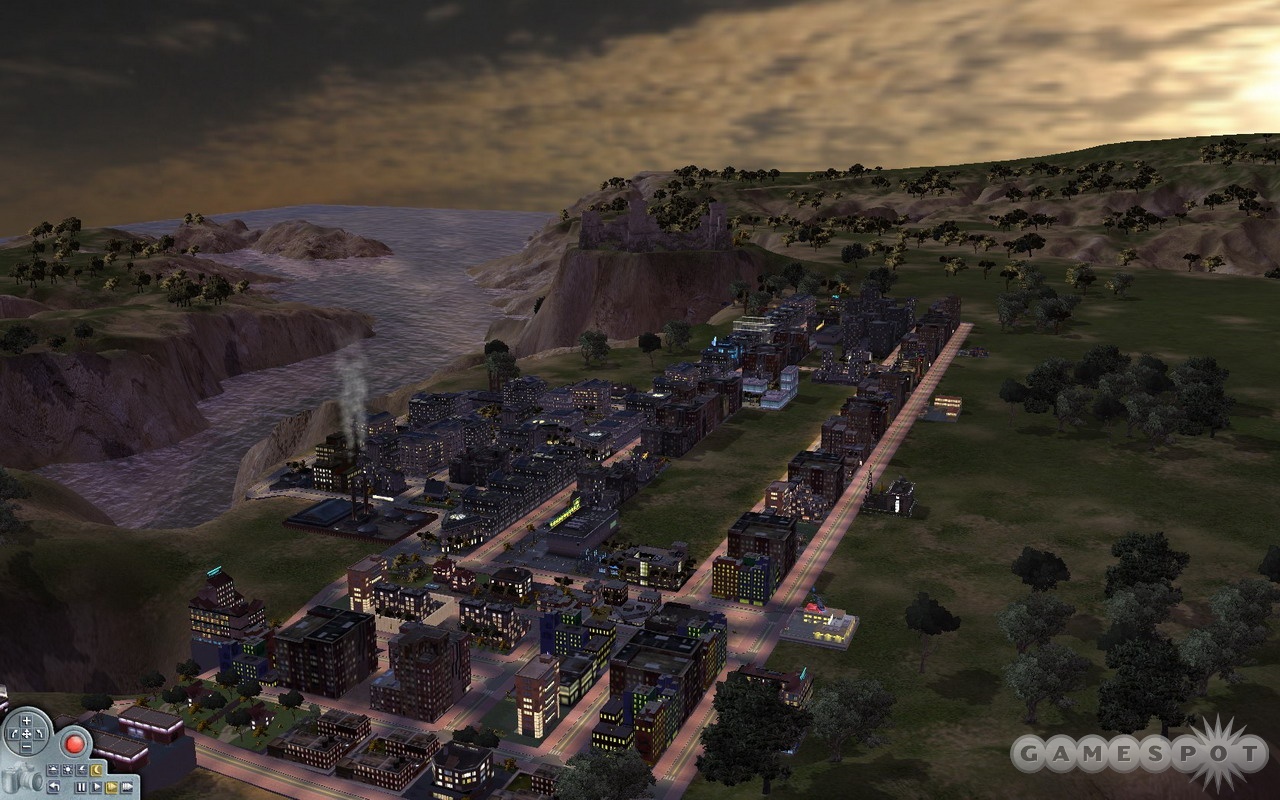Rome may not have been built in a day, but the so-called Eternal City probably went up a lot faster than the City Life series. This city-building franchise from developer Monte Cristo Games first shook up the Sim City crowd in 2006 with some quirky ideas about class conflict, but it hasn't advanced much in the past two years. While the latest addition to the lineup--the stand-alone expansion pack City Life 2008 Edition--is clearly the most thorough version of the game yet, the rundown of new features is shorter than the average bachelor's grocery list. As such, it's only worth considering if you've never experienced this city builder before, or if you skipped last year's more expansive World Edition add-on.

Still, there's no doubting that City Life 2008 is the ultimate edition of the game released thus far. As with the 2006 original, the gimmick that sets this franchise apart from other city builders is an emphasis on socioeconomics. Along with the usual erecting stores, apartment buildings, bistros, hospitals, factories, and the like, you also have to tend to the needs of six very different classes in the elites, suits, blue-collars, have-nots, fringe, and radical chic. Some groups get along reasonably well together, others don't. Neighborhoods have to take account for this, so while you can snuggle the elites up with the suits and the radical chic with the fringe, mixing the elites with the have-nots or the blue-collars with the radical chic will result in unhappiness that swiftly turns into all-out riots. Expectations also vary among the factions. Elites are the most demanding and always want quiet residential neighborhoods and immediate access to high-end shopping and services like hospitals. At the other end of the spectrum are the have-nots, who are so used to being dumped on that they won't make a fuss even if you stick their housing projects next to coal-burning power plants.
This whole setup leans heavily on stereotypes (right down to the sound effects--click on a have-not house to knock at the front door and you hear the hollow thumping of a fist on corrugated metal), but it also mirrors real life to certain degree. So you wind up developing cities that look a fair bit like real-world ones, with neighborhoods segregated according to overall wealth and personal taste. Every town you build here will have right and wrong sides of the tracks. Class struggles are cranked up to 11, as tensions flare awfully easily when opposing groups collide. People go nuts all the time here, which makes it difficult to set up peaceful city boroughs. You just get a happy district of blue-collar average joes going, and next thing you know everybody's rioting over some beret-wearing fringe types who've moved in down the block. If you're not careful, punch-ups on the streets can quickly escalate into the torching of apartment buildings and cars. You have to strike a precise balance among the six different groups in the game, as something as simple as a few misplaced industries can send your entire city up in flames.
But all this strife management isn't really any different in City Life 2008 than it was a couple of years ago. Monte Cristo has just repackaged the original game, tossed in the extras from last year's World Edition expansion, and added a few new frills. Most notably, you get a new collection of maps grouped into a campaign, 10 solo scenarios, 60 new buildings, mildly enhanced visuals (reflective water!), and an upgraded editor that allows you to import satellite photos and build cities around real-world locales.
About the only significant drawing card here for City Life fans is the new maps. But both the new campaign and the one-off scenarios pretty much recycle previous maps and geographical locations, so while you get many, many hours of extra playtime, there isn't anything here than you haven't seen before. Most annoyingly, the scenarios still don't deal with really specific or historical goals like those seen in Sim City. All the maps focus on anonymous American cities set in generic regions ranging from the temperate North to the hot, dry South. Therefore, it can be hard to really identify with the urban jungles that you're creating.
All the other new features are barely noticeable. The 60 new buildings let you add some variety to city skylines, but they're mostly variations on existing building types. None of the new visual tweaks amount to much, and of course you get the effect of the reflective H2O only when your city is near a body of water. Porting in satellite maps is an interesting idea, although it's hard to imagine anyone besides hardcore modders ever making use of this editorial amenity.
City Life is an excellent franchise that has single-handedly proven the viability of the modern city-building sim. And the 2008 Edition is the best, most complete game in the series. But there just isn't enough new content here to justify such a misleading name, let alone to make a purchase worthwhile--unless, of course, you're a newcomer to the series and want to see what the fuss is about.
